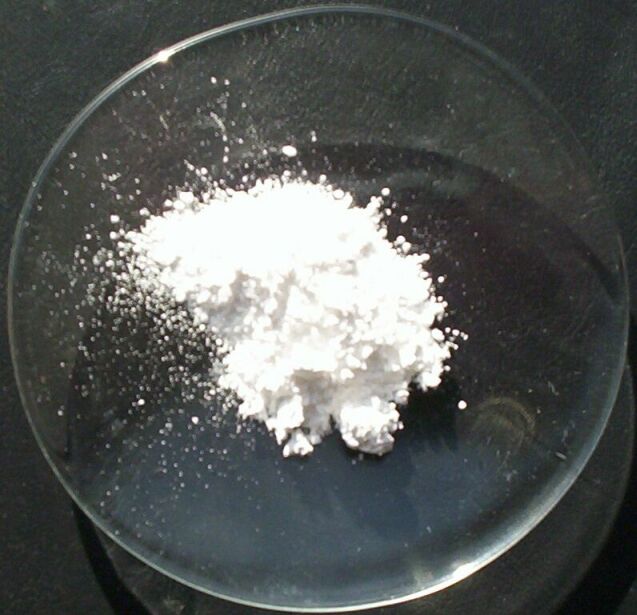Facts for Kids
Magnesium oxide is a versatile inorganic material commonly used in various industries, known for its high thermal stability and electrical insulating properties.
Overview
Health And Safety
Interesting Facts
Synthesis Methods
Uses In Industries
Chemical Properties
Environmental Impact
Historical Significance
Magnesium Oxide In Medicine

Inside this Article
Melting Point
Joseph Black
The Dead Sea
Atmosphere
Carbonate
Magnesium
Property
Building
Medicine
Did you know?
🔬 Magnesium oxide is a white hygroscopic solid that is derived from magnesium.
🌡️ It has a high melting point of about 2800 °C (5072 °F), making it useful in refractory materials.
⚗️ Magnesium oxide is often used in the production of ceramics, as it enhances strength and durability.
🏥 It is commonly used in medicine as an antacid or laxative.
💧 Magnesium oxide has lower solubility in water compared to magnesium sulfate and magnesium hydroxide.
⚛️ It acts as a pH modifier in various chemical applications.
🔋 Magnesium oxide is used as an insulating material in electrical devices due to its high thermal resistance.
🌱 It serves as a source of magnesium in agriculture as a micronutrient for crops.
🌍 Magnesium oxide is abundant in Earth's crust, often found in mineral compounds like dolomite.
🧪 It can be produced through the calcination of magnesium carbonate or magnesium hydroxide.
Introduction
It's formed when magnesium burns in the air. This cool compound is like a superhero because it's used in many things around us. From helping to create fireworks 🎆 to being an essential part of some food items, magnesium oxide is all around us. Found mainly in the oceans and the earth’s crust, we often encounter it in areas like the Dead Sea in Israel. 🏖
️ With its amazing properties, magnesium oxide sure plays a big role in our lives!
Health And Safety
️ It can sometimes be a bit dusty, so wearing masks helps to keep our lungs safe from inhaling particles. 🌬
️ In the right amounts, magnesium oxide can help people! However, it’s essential to follow instructions properly when handling it. People should avoid contact with their eyes and skin because it can cause irritation. When used in medicines, like antacids, it’s safe if taken as directed! Always remember to check with an adult before using anything new! 🧑
⚕️
Interesting Facts
It has a unique property of being very heat-resistant, making it perfect for fireproofing! Its crystal structure means that it's very stable and doesn’t break down easily over time. 🧊
Another cool fact is that it's used in making refractories, materials that can withstand super high temperatures! ⚡
And guess what? Magnesium oxide is also found in some healthy foods like nuts and seeds, which means you can benefit from it in your snacks too! 🍏
How awesome is that?
Synthesis Methods
The most common way to make it is by heating magnesium carbonate or magnesium hydroxide. When you heat these substances, they break apart and combine with oxygen from the air, forming magnesium oxide. You can imagine this process like baking a cake! 🎂
You start with ingredients and, with some heat, something new forms! Sometimes, it's made by directly burning magnesium metal in the air, which makes a bright, shining flame! 🌟
This way, we can produce high-quality magnesium oxide quickly.
Uses In Industries
One big use is in construction where it strengthens materials, like making cement and bricks! 🧱
It's also a fantastic insulator, keeping heat in and cold out. You can find it in some types of glass and ceramics, making them strong. In agriculture, it helps plant growth by improving soil quality! 🌱
Plus, magnesium oxide is used in making steel, which is essential for building buildings and cars! 🚗
Overall, this compound supports many things that help build our world!
Chemical Properties
It is known as a compound, meaning it contains two different elements: magnesium (Mg) and oxygen (O). It's a solid at room temperature and has a melting point of 2,800°C (5,072°F)! That's super hot! ☀
️ Magnesium oxide is also a strong base; it can react with acids to create salt and water. When dissolved in water, it becomes basic too, which means it can help with cleaning! One exciting fact is that it can absorb heat well, making it great for fireproof materials! 🔥
Environmental Impact
It's often seen as an eco-friendly product because it naturally occurs in the earth. When used in products, it can help recycle waste materials! ♻
️ However, there can be concerns if too much is produced or released into the air. It can affect the soil and water when not handled properly. 🌊
But on the bright side, scientists are exploring how magnesium oxide can help reduce greenhouse gases in the atmosphere, making it good for our planet! 🌍
Historical Significance
People discovered magnesium in the 18th century when a scientist named Joseph Black found it in magnesium carbonate! By the 1800s, scientists learned how to make magnesium oxide by heating the carbonate. 🧪
Throughout history, it has played a crucial role in things like fireworks and construction! Ancient Greeks used it in rituals too! Today, its importance continues, showing how our understanding of materials grows over time! 📜
It helps us build, heal, and understand our surroundings better!
Magnesium Oxide In Medicine
It is often found in medicines such as antacids, which help settle upset stomachs. 🌡
️ Doctors recommend it for people with heartburn, proving how beneficial it can be! Sometimes, it’s used in supplements for those who need extra magnesium for strong bones and muscles. 💪
Because it's gentle on the body, magnesium oxide can also be found in creams for skin irritations and rashes. Always remember, though, to listen to doctors about how to use it right!

